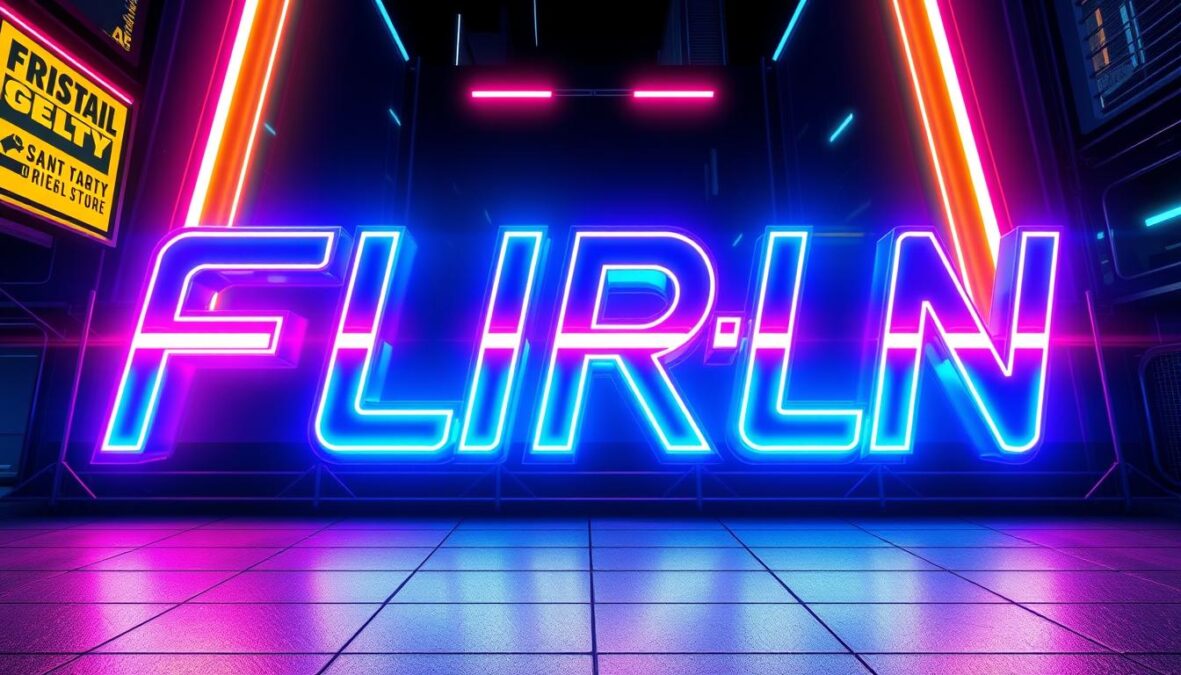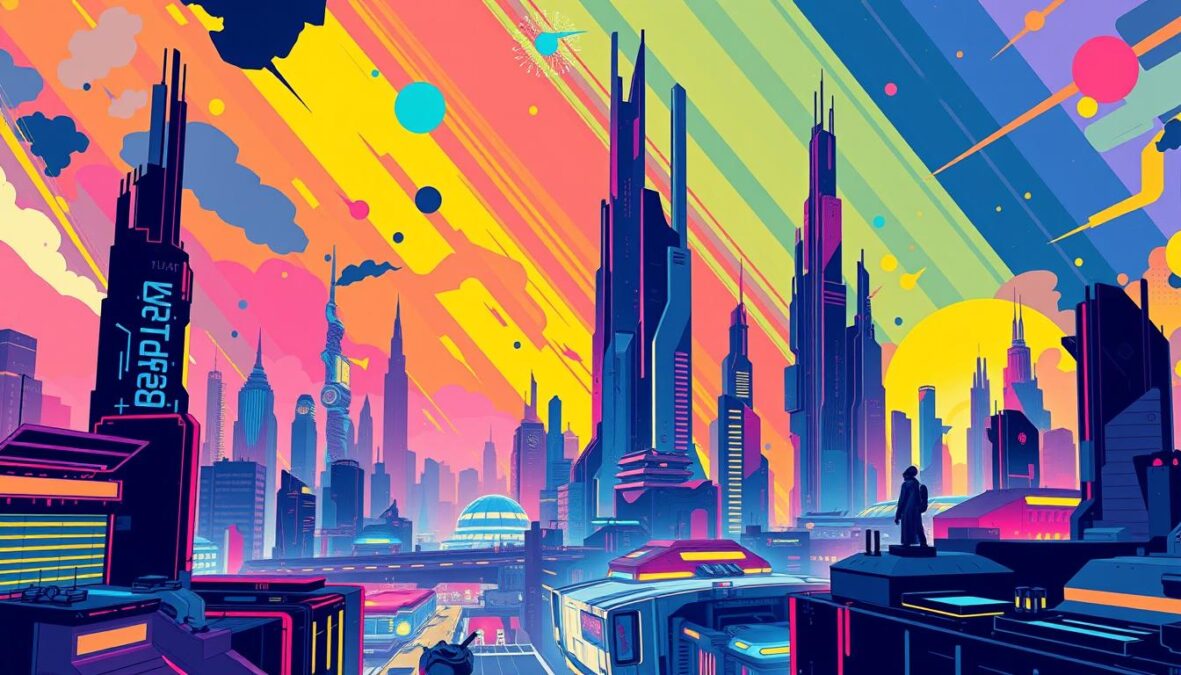The creative industry has witnessed a significant transformation with the advent of AI-powered image generation tools. One such revolutionary tool is Adobe Firefly, which has generated over 22 billion assets worldwide. Originally launched as an image generation tool, it has evolved into a comprehensive creative AI solution, designed to be commercially safe.
Leading brands like Deloitte, Tapestry, Paramount+, and Pepsi have harnessed the power of Adobe Firefly to streamline their workflows and scale content production. This step-by-step tutorial will guide you through the process of using Adobe Firefly, from understanding its core functionality to mastering advanced techniques.
Key Takeaways
- Understand the core functionality of Adobe Firefly and its commercially safe approach.
- Learn how to generate high-quality images using text prompts.
- Master advanced techniques to elevate your AI-generated artwork.
- Discover how to leverage Adobe Firefly for various creative projects.
- Streamline your workflow and scale content production with Adobe Firefly.
What is Adobe Firefly AI?
As a cutting-edge generative AI system, Adobe Firefly is transforming the way creatives work with images and text. Adobe Firefly is a generative AI system created by Adobe, designed to integrate with Adobe’s Creative Cloud applications.
Understanding Generative AI in Creative Work
Generative AI is revolutionizing creative workflows by analyzing large amounts of data to learn patterns and styles from original sources. This technology enables creatives to produce high-quality content more efficiently. Adobe Firefly is at the forefront of this revolution, providing a range of innovative features and tools.
Adobe Firefly’s Core Features and Capabilities
Adobe Firefly offers a range of exciting features, including text-to-image generation, generative fill, text effects, and generative recolor. These capabilities make it an essential tool for creative professionals. The following table summarizes the core features and capabilities of Adobe Firefly:
| Feature | Description |
|---|---|
| Text-to-Image Generation | Generates images from text prompts |
| Generative Fill | Fills selected areas with generated content |
| Text Effects | Applies effects to text, such as styles and textures |
| Generative Recolor | Recolors vector graphics based on text prompts |
How Adobe Firefly Differs from Other AI Image Generators
Adobe Firefly differs from other AI image generators, such as Midjourney and Stability AI, in its approach to training its AI models. Adobe Firefly is trained on Adobe stock photos, openly licensed content, and public domain content, making it a safer choice for commercial use. This unique approach addresses copyright concerns that plague other AI image generation tools.
Getting Started with Adobe Firefly
To unlock the creative potential of Adobe Firefly, you first need to understand how to access this innovative tool. Adobe Firefly is part of the Adobe Creative Cloud ecosystem, offering a suite of AI-powered features that can transform your creative workflow.
Creating an Adobe Account and Accessing Firefly
To start using Adobe Firefly, you’ll need to create an Adobe account if you haven’t already. This process is straightforward and can be completed on the Adobe website. Once you have an account, you can access Firefly directly through the web application or within certain Adobe applications like Photoshop.
Navigating the Firefly Interface
The Adobe Firefly interface is designed to be intuitive, making it easier for you to explore its various tools and features. Upon accessing Firefly, you’ll notice four primary tools: Text to Image, Generative Fill, Text Effects, and Generative Recolor. Each tool is designed for specific creative tasks, from generating images from text prompts to recoloring vector art.
Understanding the layout and where to find the essential tools and features is crucial for maximizing your productivity with Firefly.
Understanding the Different Firefly Models
Adobe Firefly offers different models tailored to various creative needs. For instance, Image Model4 is suitable for everyday creative projects, while Image Model4 Ultra is designed for projects that require more detail and realism. Familiarizing yourself with these models will help you choose the best one for your specific needs.
Mastering the Text-to-Image Tool in Adobe Firefly
The Text-to-Image tool in Adobe Firefly is revolutionizing the way we create art, making it accessible to everyone. This powerful feature allows users to generate high-quality images using text prompts, opening up new possibilities for creative expression.
Writing Effective Prompts for Image Generation
Crafting the right prompt is crucial for achieving the desired results with Adobe Firefly’s Text-to-Image tool. To get started, focus on creating descriptive text that clearly communicates your creative vision. Using specific details and adjectives can help the AI generate more accurate and highly detailed images.
For instance, instead of typing “a cat,” try “a fluffy white cat with bright green eyes sitting on a velvet cushion.” This level of detail helps the AI understand your requirements and produce a more satisfying image.
Adjusting Settings for Better Results
Adobe Firefly provides a range of settings to refine your generated images, ensuring they meet your creative needs. Let’s explore these options in more detail.
Content Type and Style Settings
The Content Type setting allows you to choose between different categories such as photo, graphic, or art, depending on your desired output. Additionally, Adobe Firefly offers 63 style options across 7 categories, giving you a wide range of creative possibilities.
Aspect Ratio and Composition Controls
Adjusting the aspect ratio and composition controls can significantly impact the final image. You can choose from various aspect ratios to suit different applications, from social media to print.
Color, Tone, and Lighting Options
Adobe Firefly’s color and lighting options provide further refinement. You can select from 7 color and tone presets, as well as various lighting effects such as backlighting, dramatic lighting, or golden hour, to achieve the desired mood and atmosphere in your image.
Saving and Exporting Your Generated Images
Once you’re satisfied with your generated image, you can save and export it in various formats suitable for different use cases. Adobe Firefly makes it easy to share your creations on social media or use them for print materials, ensuring your art looks great in any context.
Using Generative Fill to Transform Images
Generative Fill in Adobe Firefly is a game-changer for image editing, offering a sophisticated way to modify images by adding or subtracting elements. This powerful tool allows for seamless transformations, making it an indispensable asset for creatives.

Uploading and Preparing Images for Editing
To start using Generative Fill, you first need to upload your image to Adobe Firefly. It’s essential to choose the right image format and resolution to ensure the best results. High-resolution images yield more detailed outputs, while lower resolutions might result in softer or less detailed generated content.
Adding Elements with the Insert Tool
The Insert tool in Generative Fill allows you to add new elements to your images using text prompts. By specifying what you want to add, you can create complex compositions that would be challenging with traditional editing tools. For instance, you can add a majestic mountain range to a serene lake scene or introduce characters into a historical setting.
Removing Unwanted Elements and Backgrounds
Generative Fill also enables the removal of unwanted elements and backgrounds from your images. By using the Remove tool, you can erase distractions or isolate subjects, creating clean and focused visuals. This feature is particularly useful for product photography and portrait editing.
By mastering Generative Fill, you can significantly enhance your image editing capabilities, achieving professional-grade results with ease. Whether you’re adding elements or removing backgrounds, Adobe Firefly’s Generative Fill tool is designed to streamline your creative workflow.
Creating Stunning Text Effects with Adobe Firefly

The Text Effects feature in Adobe Firefly allows users to generate highly detailed and customizable text visuals. This tool works similarly to the text-to-image feature, where you add a text prompt describing the desired image, and then adjust settings as needed.
Designing Eye-Catching Text Visuals
To create captivating text effects, you need to craft descriptive prompts that clearly communicate your desired style and aesthetic. For instance, you can generate a highly detailed text image by specifying the texture, color, and overall visual style in your prompt. The text effect fit setting allows you to control how closely the generated effect conforms to your text, giving you more creative control over the final output.
Experimenting with different prompts and settings can lead to unique and stunning text visuals. Adobe Firefly’s output resolution is notably higher than other AI art generators, making it a valuable tool for professional graphic designers.
Customizing Fonts and Colors
Adobe Firefly offers a range of customization options, including twelve different fonts and the ability to apply multiple colors to both the text and the background. This flexibility allows you to create text effects that perfectly match your brand or project requirements.
Exporting Text Effects with Transparent Backgrounds
One of the standout features of Adobe Firefly is the ability to export text effects with transparent backgrounds. This makes it particularly useful for graphic design work, where integrating text effects into existing designs is often necessary. By exporting with a transparent background, you can seamlessly incorporate your text effects into various projects.
It’s worth noting that Adobe is committed to the ethical use of AI, watermarking and embedding metadata in all images generated with Firefly. This ensures transparency in AI-created content and maintains the integrity of the creative process.
Exploring Generative Recolor for Vector Art

Generative Recolor in Adobe Firefly is a game-changer for vector art, enabling artists to explore a wide range of color options effortlessly. This powerful tool simplifies the process of creating unique and captivating color schemes for vector graphics.
Uploading SVG Files to Firefly
To start using Generative Recolor, you first need to upload your SVG file to Adobe Firefly. This process is straightforward: simply navigate to the Firefly interface, select the upload option, and choose your SVG file. Firefly supports a wide range of SVG formats, making it easy to work with files from various design applications.
Once uploaded, your vector art is ready for color transformation. The ease of uploading and preparing files for recoloring streamlines the design process, allowing you to focus on creativity rather than file compatibility issues.
Creating Color Variations with Text Prompts
After uploading your SVG file, you can use text prompts to describe the color palette you envision. For instance, you might enter a prompt like “sunset colors with warm oranges and deep purples.” Firefly’s AI then generates a range of color variations based on your description, giving you a diverse palette to choose from.
This feature is particularly useful for exploring different moods and atmospheres in your vector art. By simply changing the text prompt, you can achieve dramatically different color schemes, all while maintaining the original artwork’s integrity.
Using Color Harmony and Palette Controls
To refine the generated color palettes, Adobe Firefly offers color harmony and palette controls. You can select from various harmony options such as complementary, analogous, or triadic to create cohesive color schemes. Additionally, the color picker tool allows you to manually select specific colors and incorporate them into your palettes.
These controls give you the flexibility to fine-tune the generated colors, ensuring they perfectly match your artistic vision. Whether you’re designing logos, illustrations, or other vector graphics, the ability to control and adjust color palettes is invaluable.
Advanced Tips for Adobe Firefly AI Image Generation Tutorial
Learn how to optimize your Adobe Firefly experience with these expert-approved advanced tips. To get the most out of Adobe Firefly’s AI image generation capabilities, it’s essential to understand the nuances of crafting effective prompts and utilizing the tool’s advanced features.
Crafting Detailed Prompts for Better Results
Crafting a detailed prompt is crucial for achieving the desired outcome in Adobe Firefly. Start with a clear idea of what you want to create, including a subject. Be specific and descriptive to help the AI generate an image that meets your expectations. For instance, instead of saying “a cat,” say “a fluffy white cat sitting on a windowsill with a sunny background.” This level of detail will result in a more precise and satisfying output.
Using Style Modifiers Effectively
Style modifiers can dramatically change the aesthetic of your generated images without altering your core prompt. By incorporating style modifiers, you can achieve a wide range of effects, from changing the lighting to altering the overall style of the image. For example, adding “cyberpunk” or “watercolor” to your prompt can give your image a unique and distinct look. Experimenting with different style modifiers can help you discover new and exciting possibilities with Adobe Firefly.
Adding “Boost Words” to Enhance Quality
Using “boost words” or adjectives like “beautiful,” “highly detailed,” or “professional” can significantly enhance the quality of your AI-generated images. These words act as boosters that increase the output quality when used in your prompts. For instance, adding “highly detailed” to your prompt can result in an image with more intricate details and a more realistic appearance.
Working with Repetition in Prompts
Strategic repetition in prompts can be surprisingly effective in reinforcing certain elements in your generated images. While it may seem counterproductive, repeating key elements or descriptors can help emphasize them in the final output. For example, if you’re generating an image of a landscape, repeating the word “mountain” or “sunset” can ensure that these elements are prominent in the resulting image.
By combining these advanced techniques, you can create a workflow that consistently produces high-quality AI-generated images with Adobe Firefly. Whether you’re using the Text-to-Image tool or exploring Firefly Video generation, these tips will help you unlock the full potential of Adobe Firefly’s AI image generation capabilities.
Conclusion: Taking Your Adobe Firefly Skills to the Next Level
Now that you’ve mastered Adobe Firefly, it’s time to integrate this powerful tool into your creative arsenal. With Firefly, you can seamlessly move from ideation to production, accessing your generation history across devices and exporting directly into Photoshop Web and Express. This enhances your workflow, allowing for dynamic presentations, engaging social media content, and streamlined design processes. As Adobe continues to develop Firefly, upcoming features like the mobile app will further expand your creative possibilities, solidifying Firefly as a cornerstone of your Creative Cloud workflow.
FAQ
What are the system requirements for running Adobe Firefly?
Can I use Firefly without a Creative Cloud subscription?
How do I write effective text prompts for generating high-quality images?
Can I use my own images as a starting point for editing in Firefly?
Are there any limitations to the types of images I can generate with Firefly?
How do I access the different Firefly models, and what are their uses?
Can I use Firefly to create vector art and edit SVG files?
Are there any resources available to help me improve my skills with Firefly?
There are no reviews yet. Be the first one to write one.
